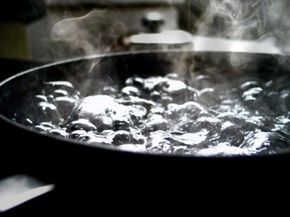Advertisement
Q. What is blanching?
A. Blanching, also known as parboiling, is the method by which foods are partially cooked as a way to preserve their color, texture, and flavor. It's also a great way of loosening the skins from items like tomatoes, nectarines, and peaches, making subsequent peeling a breeze.
Blanching is simple: Foods are briefly cooked in boiling water, then submerged in a bowl of ice water to stop the cooking process. This technique saves time when preparing recipes that contain both quick-cooking ingredients and denser ones that generally take longer to cook.
Advertisement
Q. What are some basic blanching facts?
A. Blanching also helps preserve color. Vegetables such as carrots, broccoli, cauliflower, green beans, asparagus, and sugar snap peas benefit from blanching when they're going to be served raw with dips, or when they'll be added last minute to stir-fries.
Besides stir-frying, any number of methods can be used to finish cooking blanched foods. Blanched produce can also be readily frozen once it has cooled completely and has been patted dry of excess moisture.
Advertisement
Blanching accomplishes several things: It loosens the skins of thin-skinned foods such as tomatoes and peaches so they can be removed easily. Many fruits and vegetables are blanched before freezing or canning to bring out their colors and flavors, and to kill any bacteria on the food before preserving it.
Blanching also results in an attractive bright color to vegetables, such as green beans, that are going to be cooked only until they are crisp-tender and then used chilled, such as in a salad.
Advertisement
